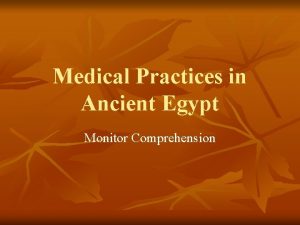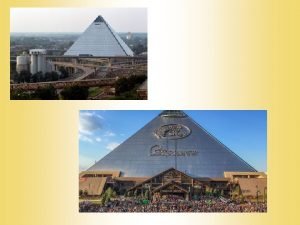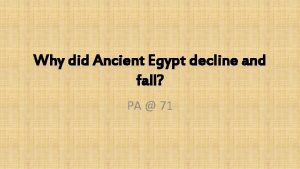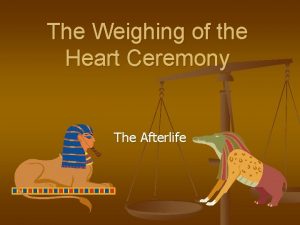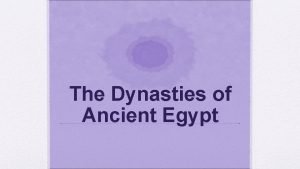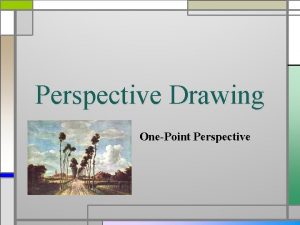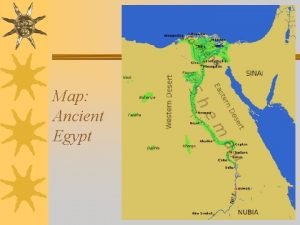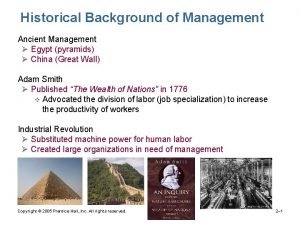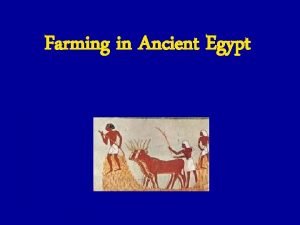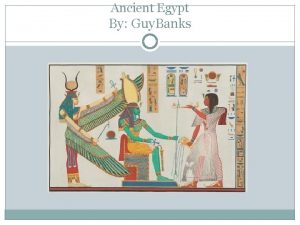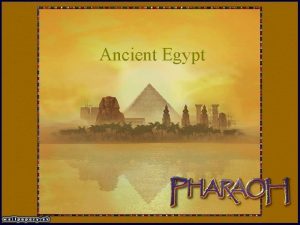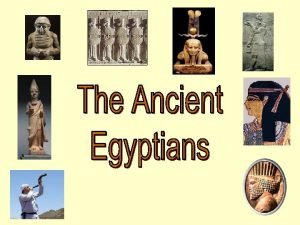Medical Practices in Ancient Egypt Monitor Comprehension Learning












- Slides: 12

Medical Practices in Ancient Egypt Monitor Comprehension

Learning from the Dead n To find out why people have died, today’s medical examiners perform autopsies (AW-top-seez). They cut open the body and study its parts. Ancient Egyptians also performed autopsies to help understand causes of death. In addition, autopsies helped ancient Egyptians study the human body. By comparing the hearts of people who were different ages, for example, Egyptians could determine what a young, healthy heart was supposed to look like.

Keeping a Written Record n The Egyptians not only studied the human body, but they also kept detailed records of what they discovered. They wrote and drew their observations on papyrus, a form of paper. The papyrus records became the medical textbooks of that time. Their observations allowed Egyptian doctors to share their knowledge, including how to treat various diseases.

Edwin Smith Papyrus In 1862, an American named Edwin Smith purchased a medical papyrus in Luxor, Egypt. Smith was not a medical expert, but he knew a lot about old documents. He knew that what he had found was valuable. The papyrus turned out to be a ancient textbook on surgery. The papyrus was probably written around 1600 BC, but it was based on information from a thousand years before that. The papyrus presents the information as case studies, including an analysis of how patients survived or died.

Strategy Practice n How did autopsies help ancient Egyptians learn about the human body?

Strategy Practice n How did autopsies help ancient Egyptians learn about the human body?

Skill Practice n Read each question. Write the letter and response.

Skill Practice n n n Which one best describes what the headings do? They tell the main idea of the passage. They describe when events happened. They tell what each section is mostly about. They compare modern and ancient medicine.

Skill Practice n n n What is the passage mostly about? Edwin Smith made an important discovery. The ancient Egyptians cut open bodies to study their parts. The ancient Egyptians knew a lot about the human body. Detailed records were written on papyrus.


Skill Practice n n n Choose the detail that best supports this idea: Autopsies helped the Egyptians learn about the human body. Egyptians were able to compare body parts. Today’s medical examiners perform autopsies. Medical examiners learn a lot about bodies. Egyptians made records of their findings

Skill Practice n n n What are doctors in the year 3020 most likely to learn by reading a medical textbook from 2020? how to perform the best surgery ancient Egyptian medical practices how to preserve bodies early twenty-first century medical practices
 Medical practices in ancient egypt answer key
Medical practices in ancient egypt answer key Upper egypt and lower egypt
Upper egypt and lower egypt Northern greece
Northern greece The weighing of the heart ceremony
The weighing of the heart ceremony Greek floral arrangements
Greek floral arrangements Ancient egypt vocabulary words
Ancient egypt vocabulary words Frontalism egyptian art
Frontalism egyptian art The british council egypt
The british council egypt Specialized jobs in ancient egypt
Specialized jobs in ancient egypt artists use this perspective to show objects face-on.
artists use this perspective to show objects face-on. Outline map of ancient egypt
Outline map of ancient egypt Ancient management
Ancient management What crops did ancient egypt grow
What crops did ancient egypt grow
